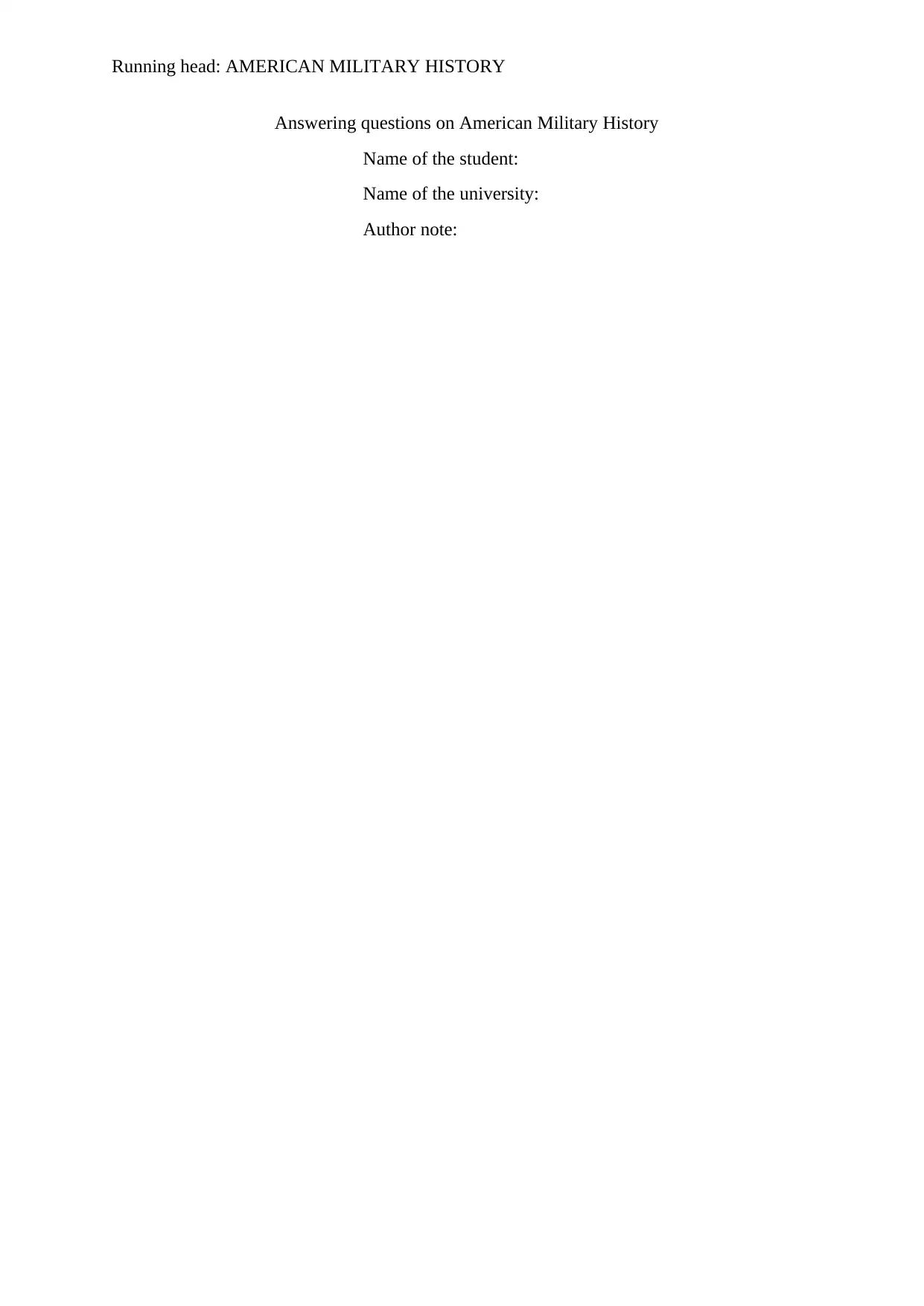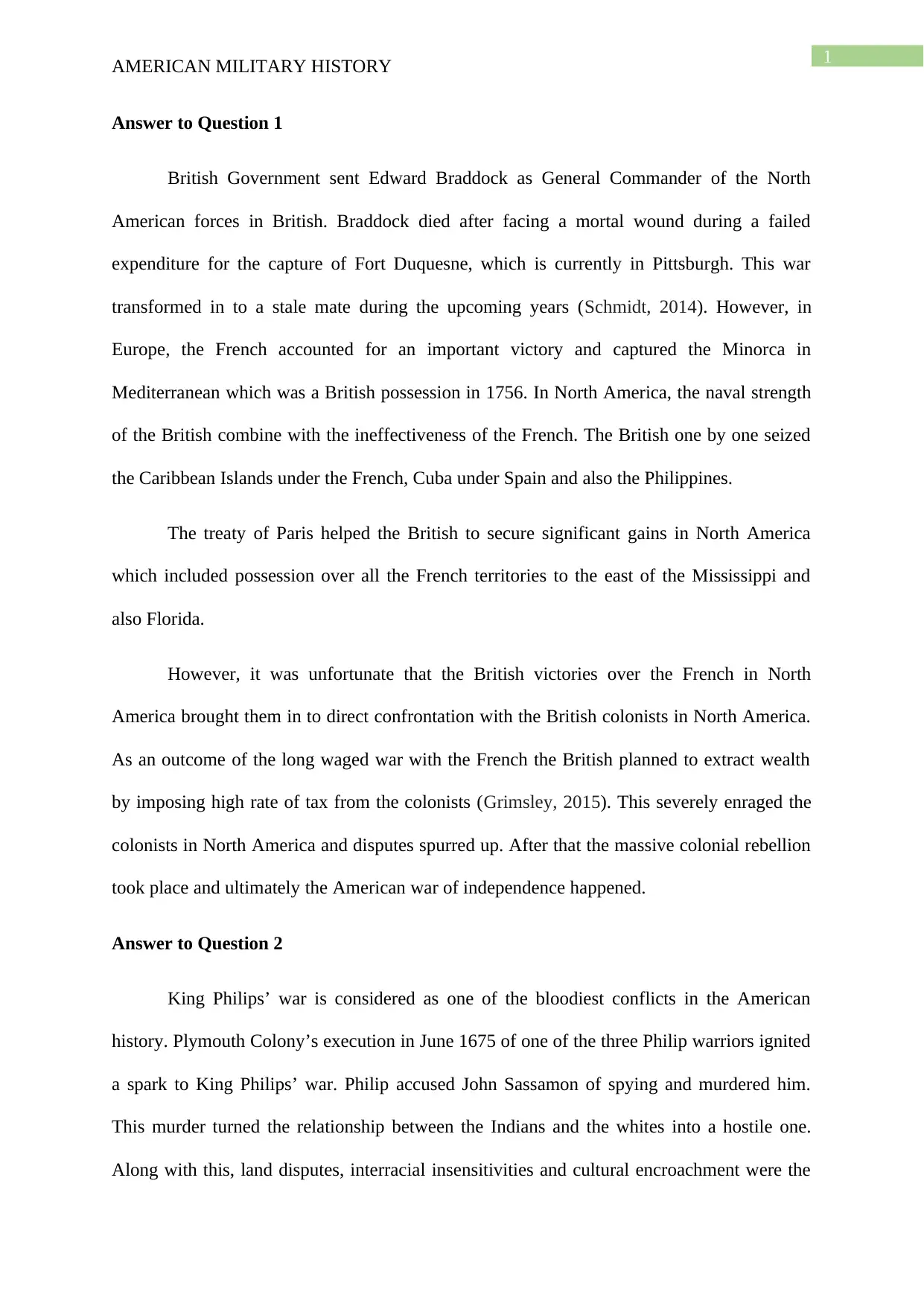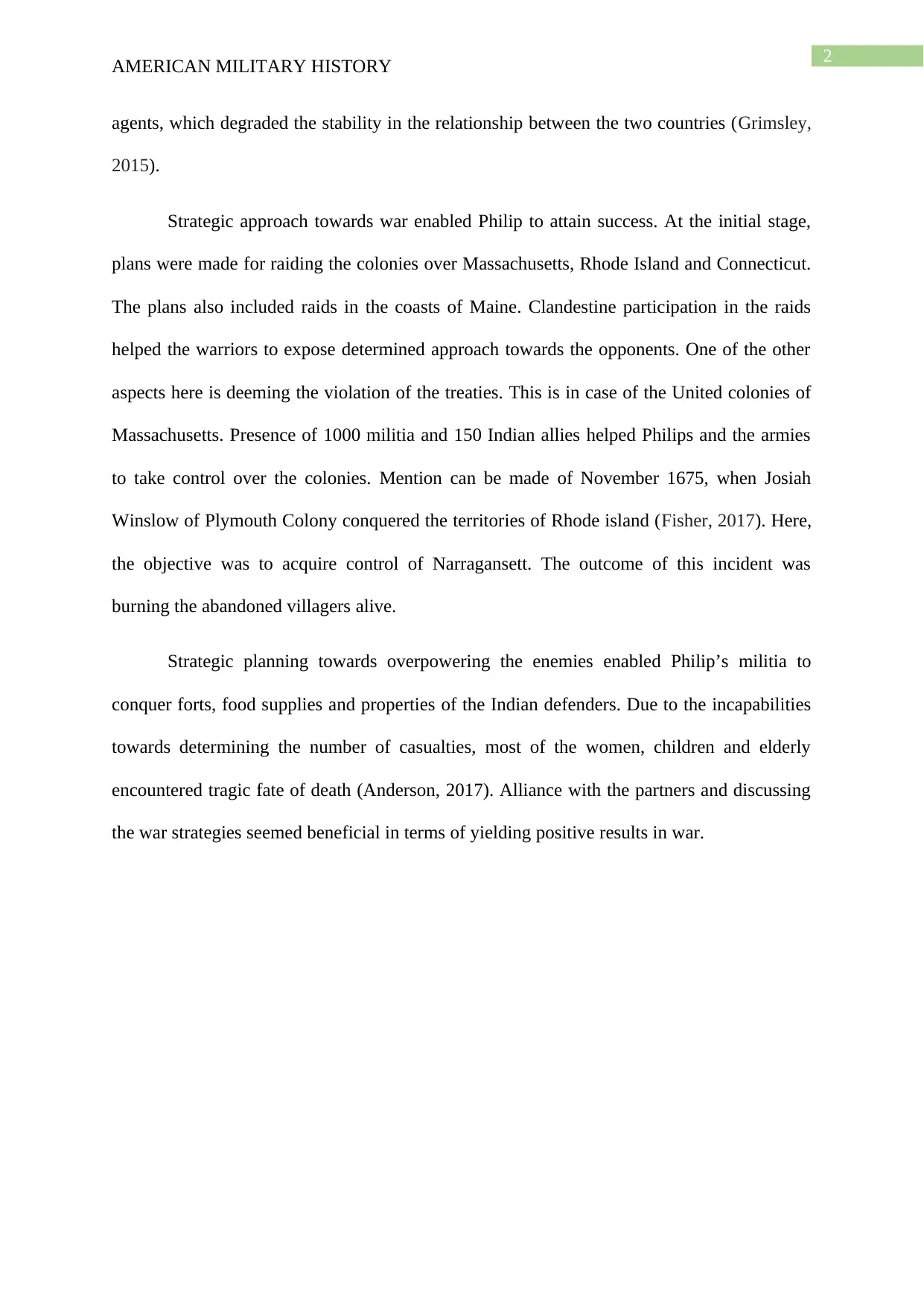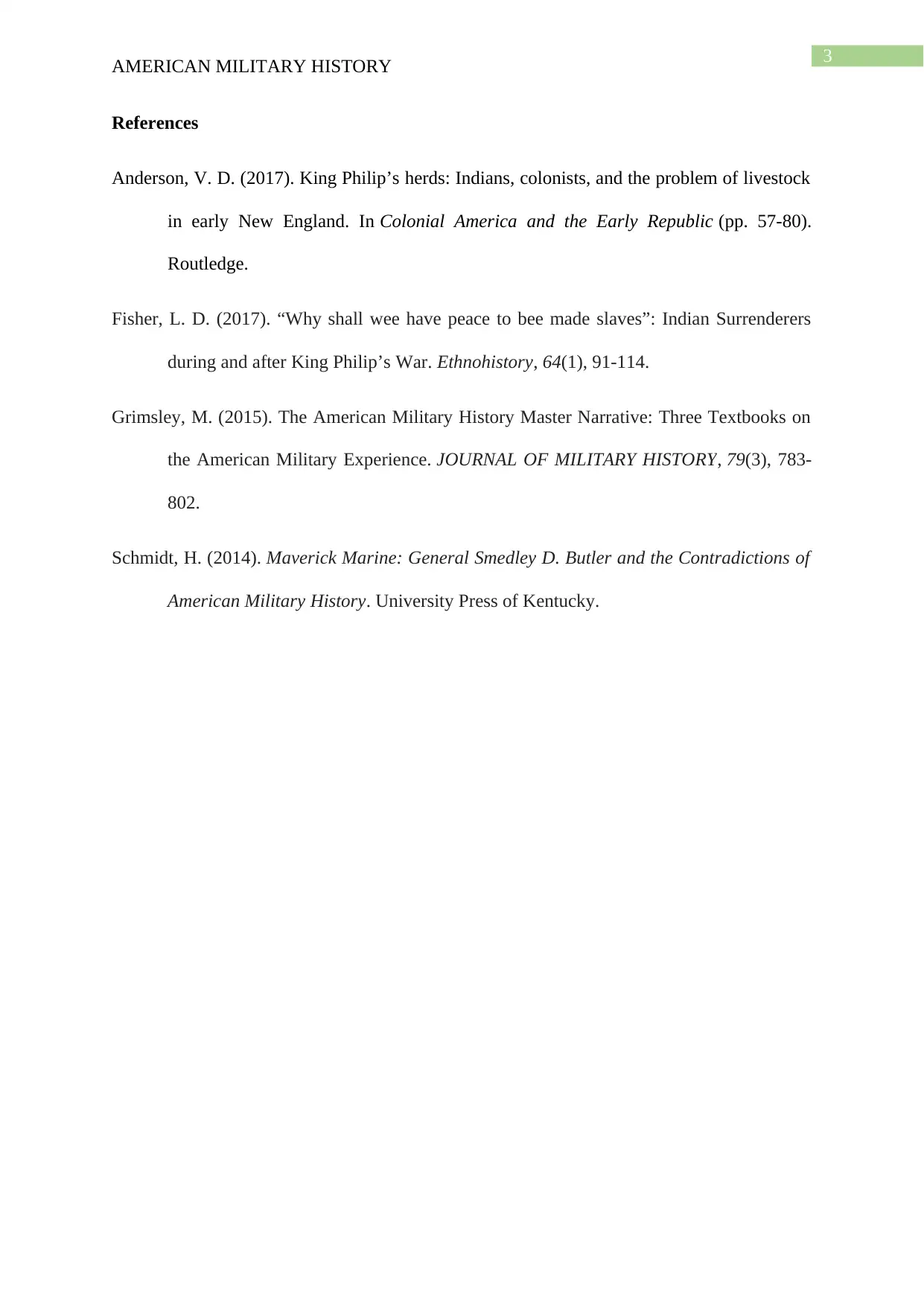Analyzing British Victories and King Philip's War in American History
VerifiedAdded on 2023/06/03
|4
|761
|226
Essay
AI Summary
This essay delves into two significant periods in American military history: the British victories from 1758 to 1760 over the French in North America and King Philip's War. Regarding the British victories, it highlights key military figures like Edward Braddock and discusses the impact of these victories, secured through strategies combining naval strength and exploiting French ineffectiveness, on the American colonies, particularly the tensions arising from British taxation policies. The essay also analyzes King Philip's War, emphasizing the strategic approaches employed by the colonials, the major figures involved, and the events that led to the conflict, including land disputes and cultural encroachment. It underscores the initial successes of Philip's forces due to strategic planning and alliances, while also noting the devastating consequences and casualties suffered during the war. The essay concludes by referencing sources that provide further insights into these historical events.
1 out of 4








![[object Object]](/_next/static/media/star-bottom.7253800d.svg)